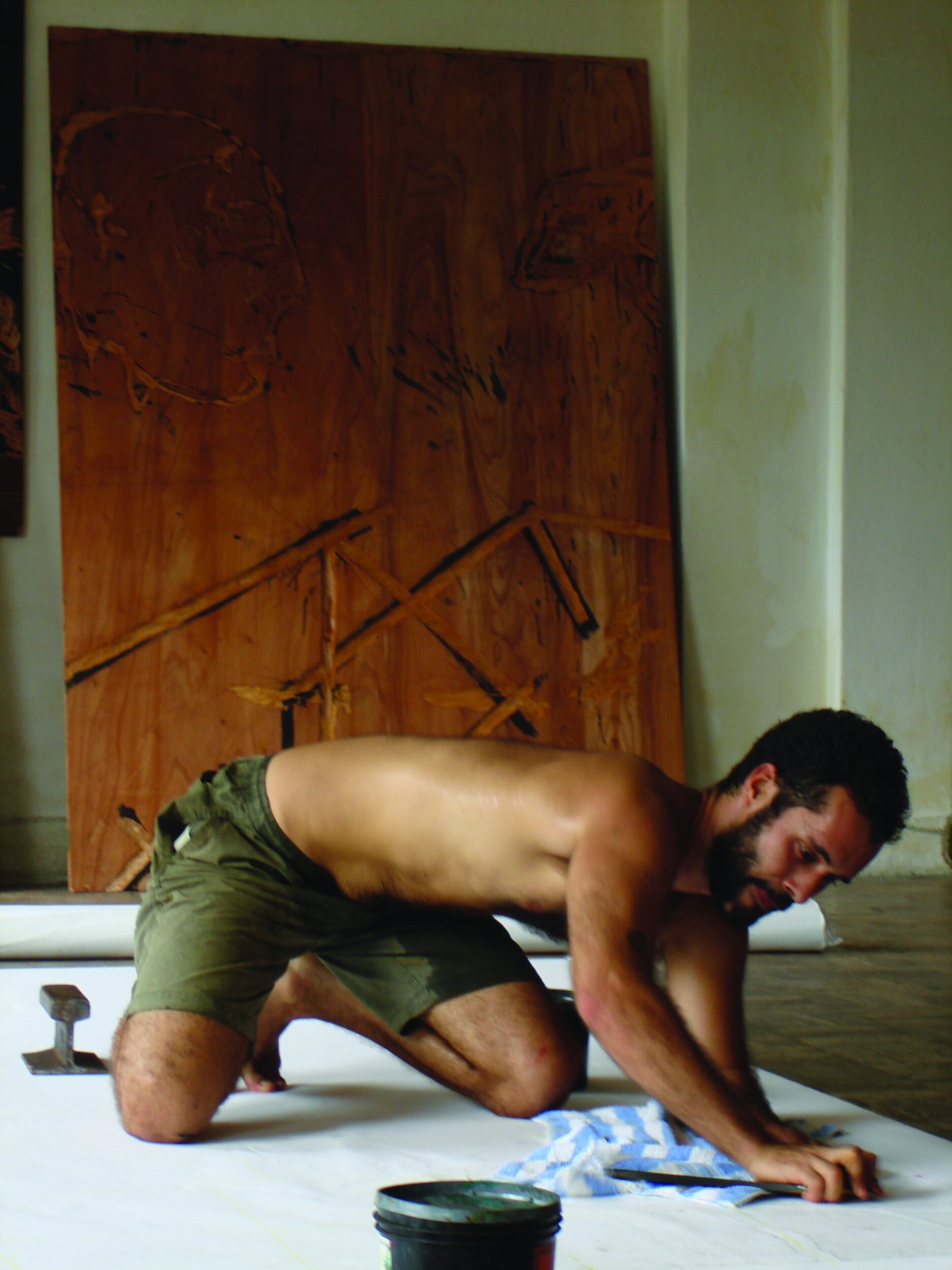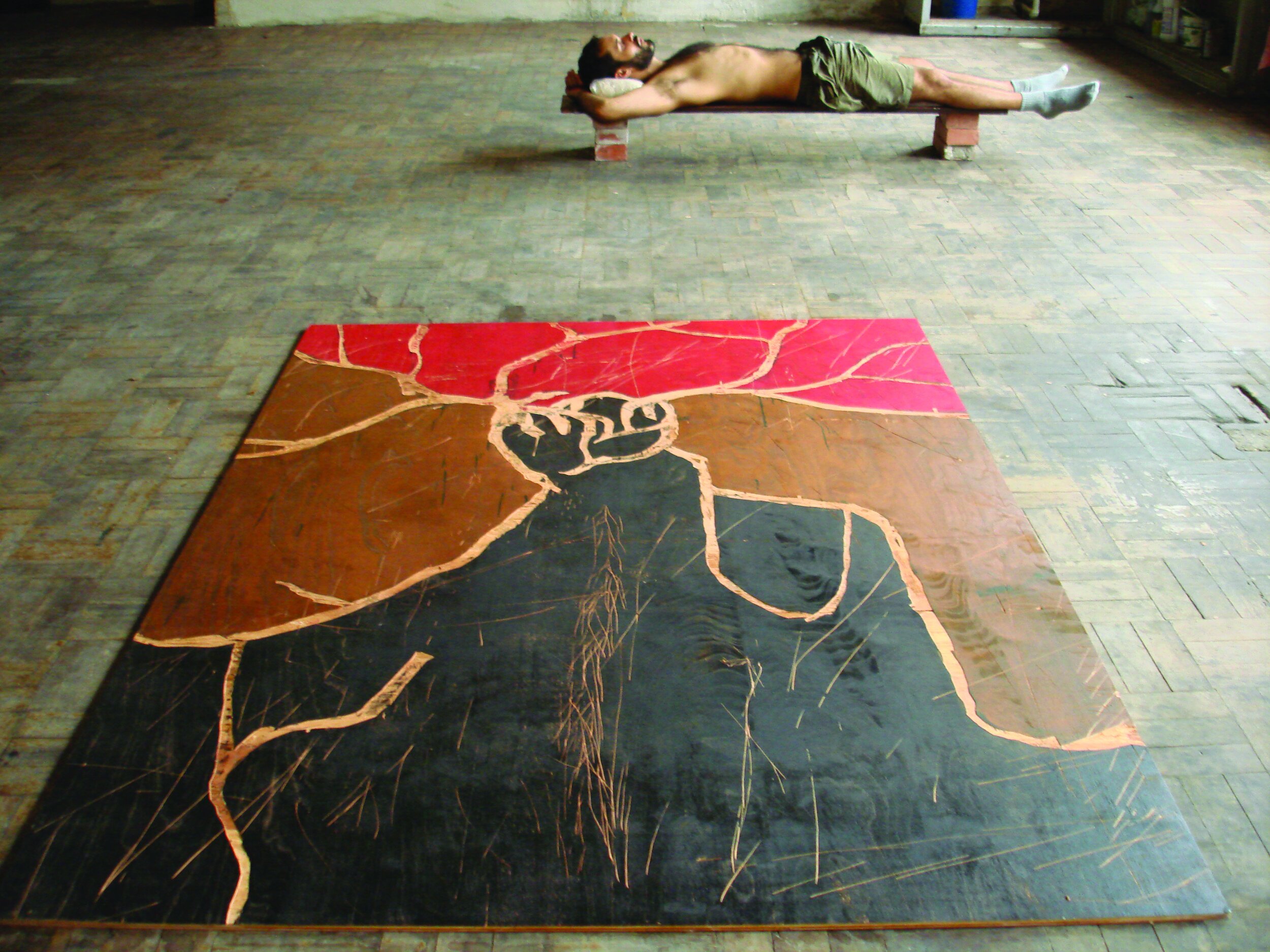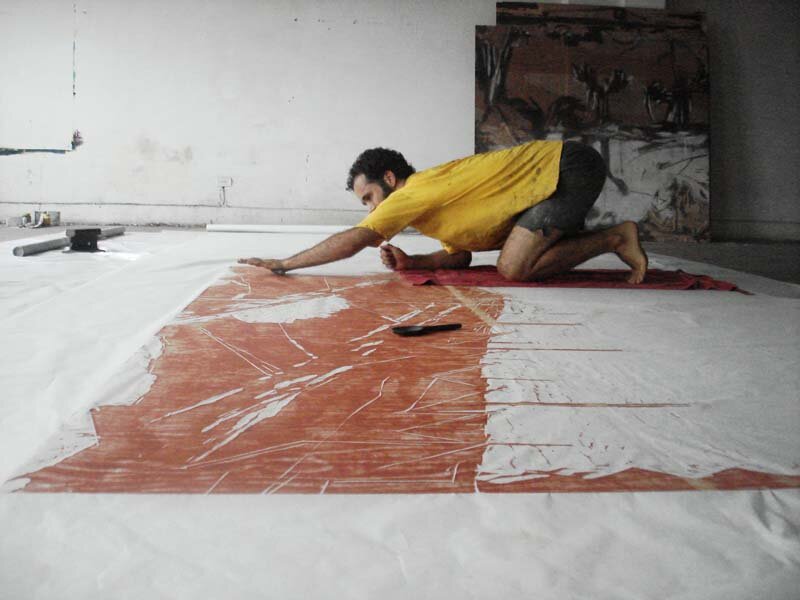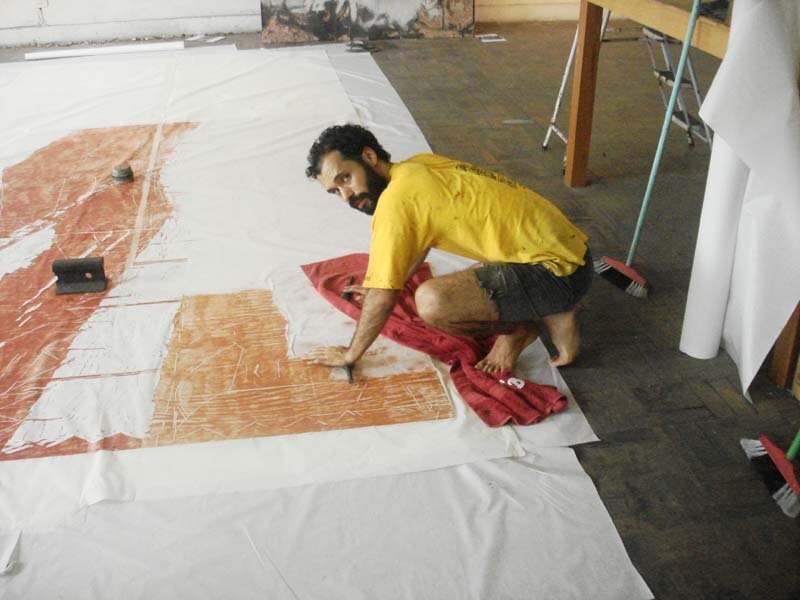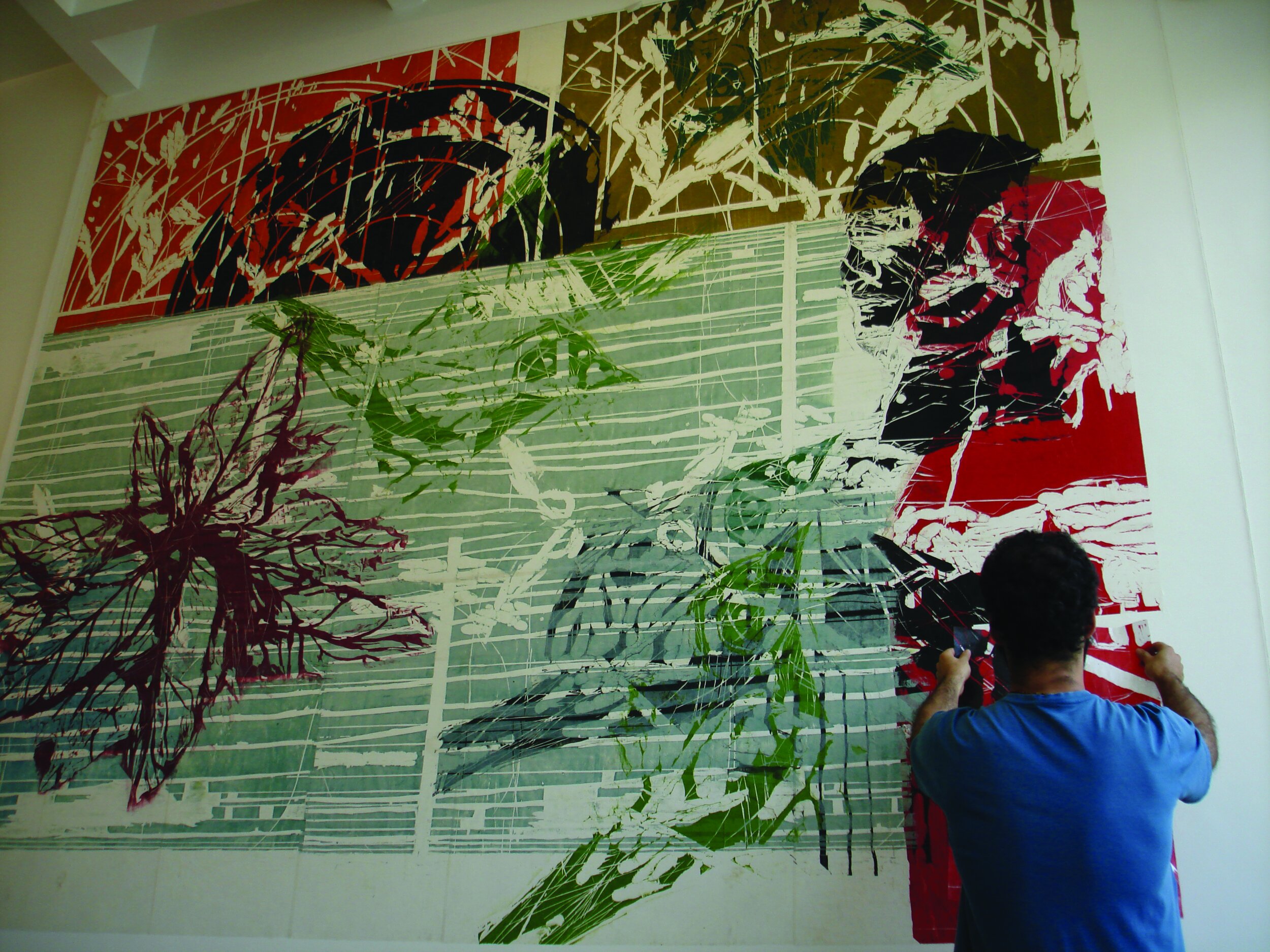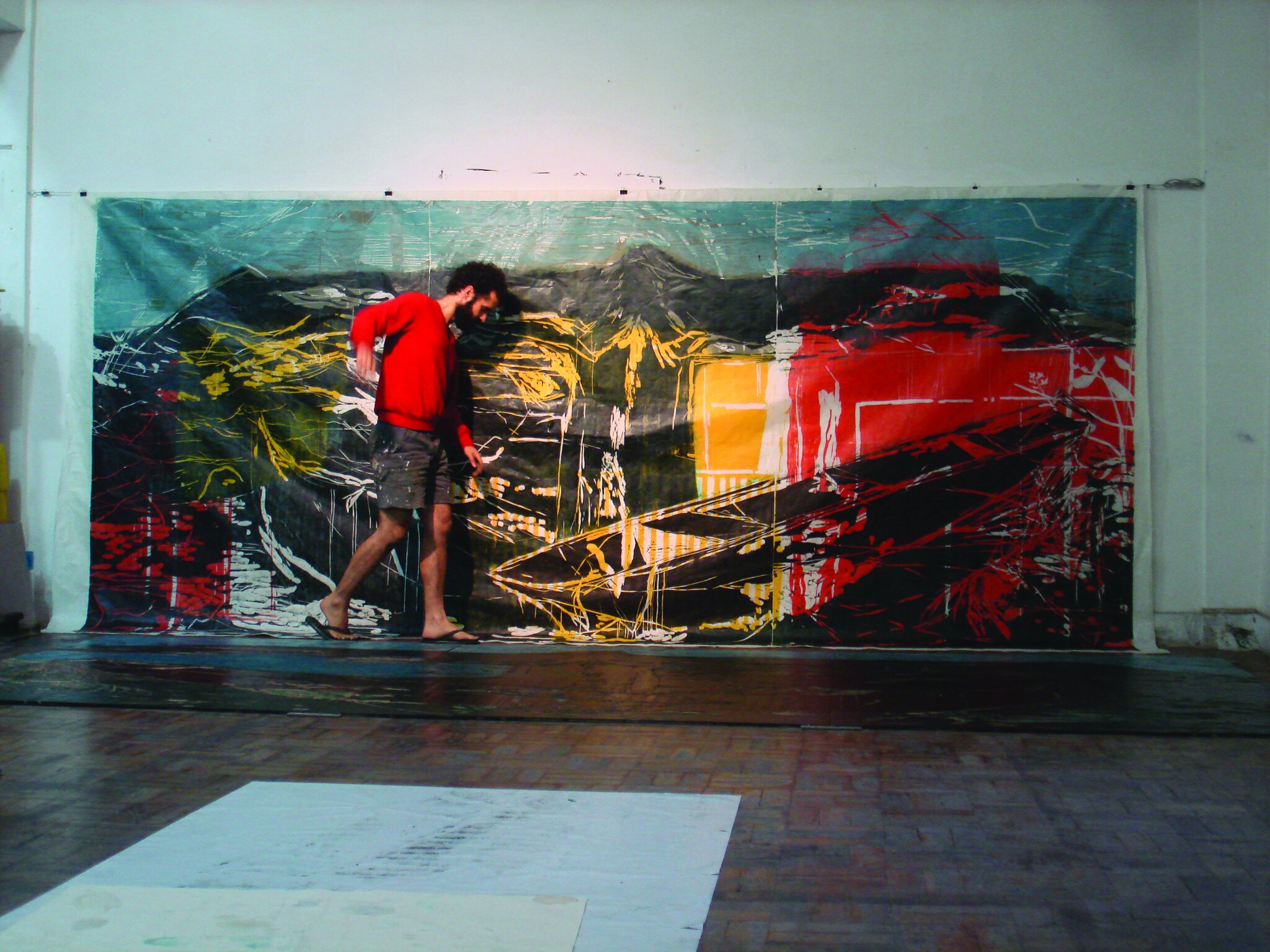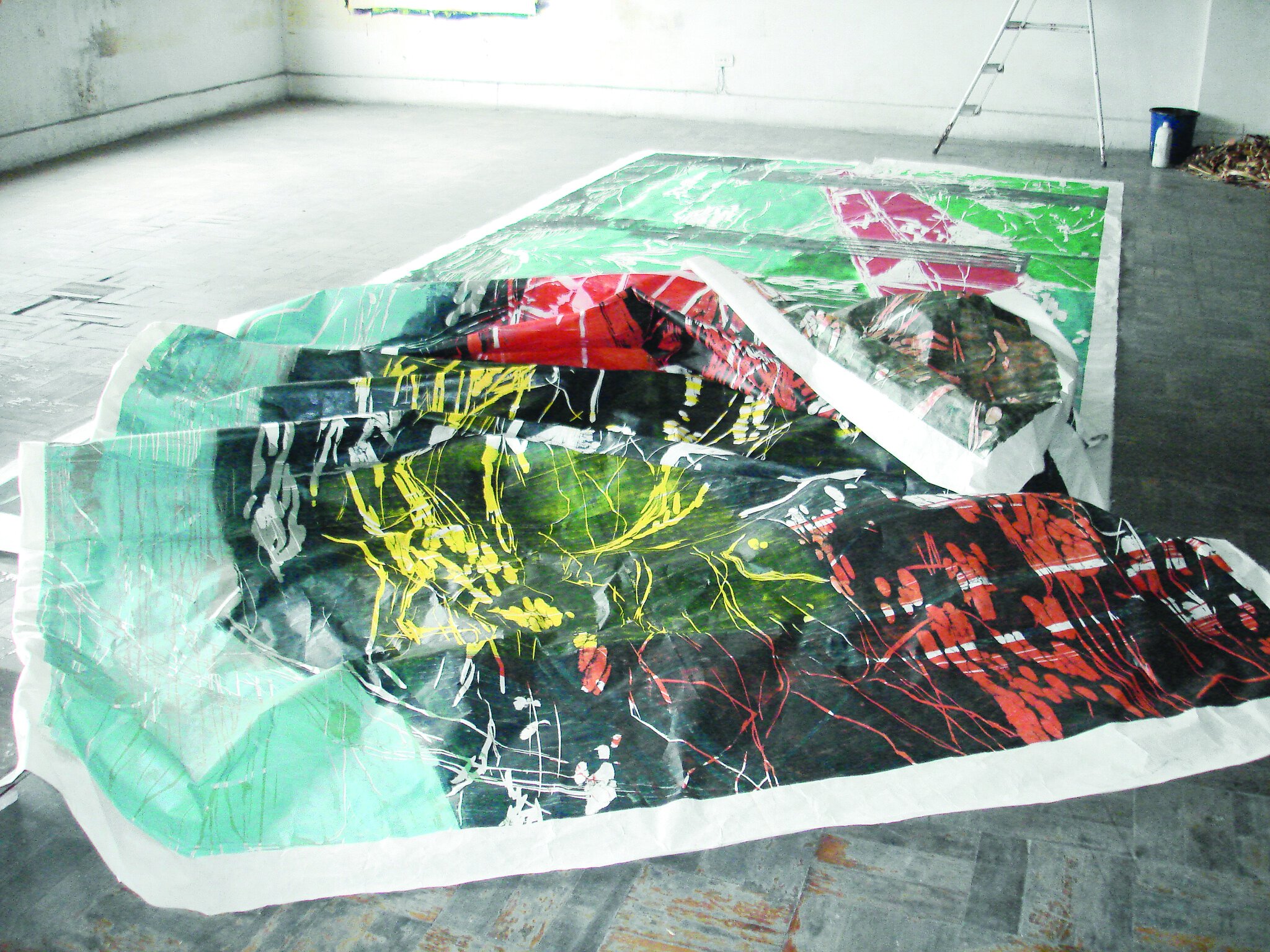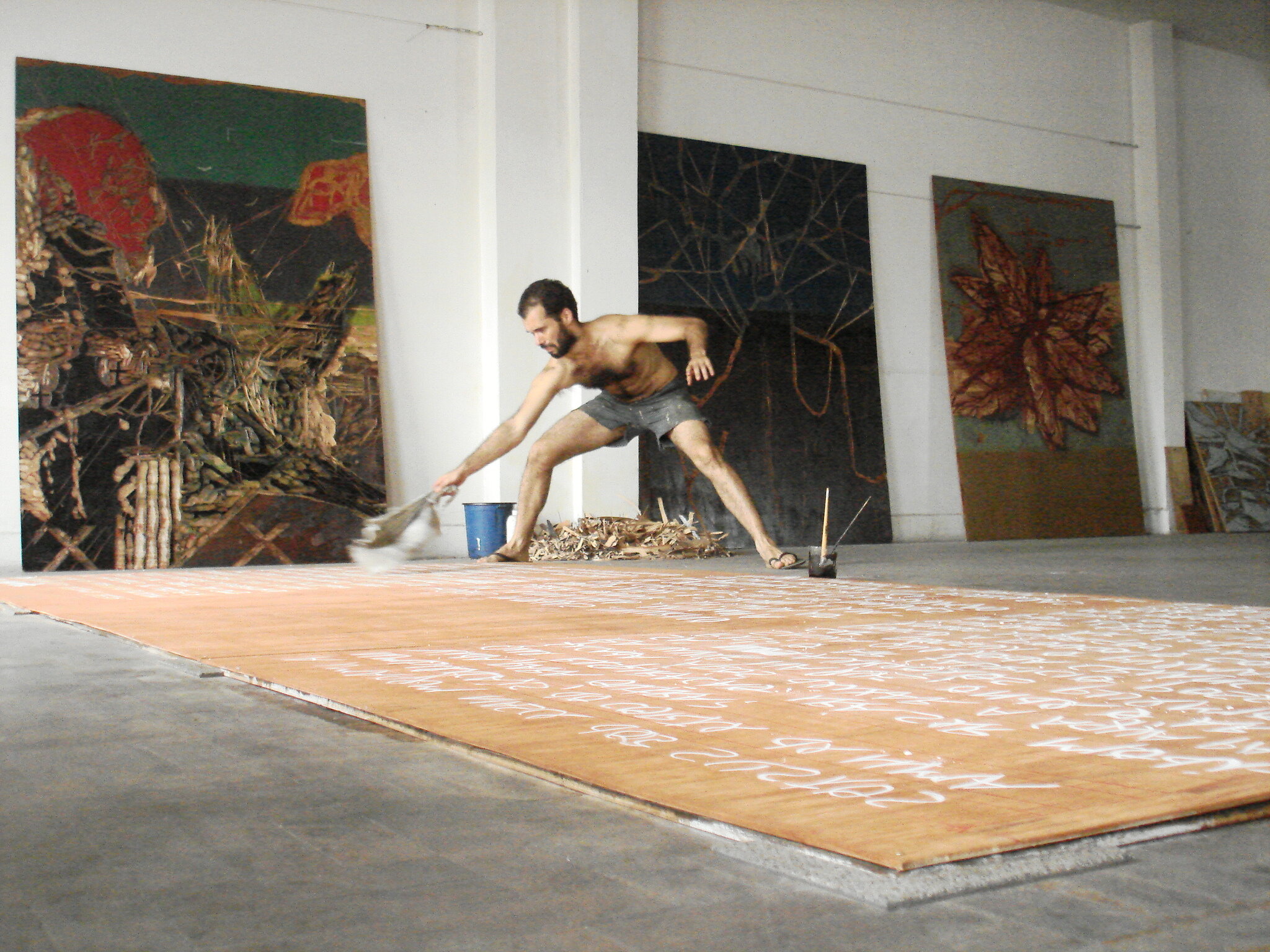Fabricio Lopez: On Shells, Hearts, and Eloquence
View of A concha eloquente do coração (The Eloquent Conch of the Heart), solo show held in 2013 at Centro Universitário Maria Antonia. Photo: Everton Ballardin
After wandering around the house looking for the best place to teach my online classes, I ended up choosing a small tall dull table in the middle of the living room. My students got used to seeing me with a background containing a TV, a plant, a mirror, and part of a large abstract painting in shades of magenta and green. Many people ask who is the author of that painting. And the answer is: Fabricio Lopez.
This untitled painting is a favorite in my collection. I was captivated by it when I first saw it at Fabricio’s graduation exhibition at FAAP in 2000, when I worked as an art criticism professor. Lucky me, I bought the painting right after Fabricio’s graduation. It’s so good to look at it every day. I can’t get enough of it. Good art never tires. It always shows you something you hadn’t noticed before.
I also have two woodcut prints by Fabricio. Woodcut is the medium Fabricio most identifies with. He likes to take the gouge in his hand, go up on a wooden plate and pull out everything he needs until he leaves an etched image of something important to him. When I say “go up,” I’m being literal. As these plates are large, engraving them is a task that involves his whole body, not just his hands. Fabricio goes on relentlessly digging these surfaces, bringing up the negative of images that later will be printed on large sheets of paper, combined and overlaid in different ways, with different colors, like layers of memories. Each print by Fabricio is an original resulting from a process that subverts the purpose of this technique that was created for infinite reproductions of the same.
Fabricio’s prints are an invitation to explore palimpsests of an imaginary created by the sea. He was born in Santos, São Paulo state, the town where he has lived and worked for the most of his life. Memories of the town, of his own experience, of daily contact with the sea. All of this using a combination of recollections etched on wood, which come back in large format prints fixed on the wall with a technique similar to that of fly-posters, but endowed with the virtue of being transferable to wherever the heart sends them.
In the heart reside conchs in whose cavities the sound of the waves and the echoes of memories, dreams, and desires are heard. Fabricio’s woodcuts have taken him to many places around the world, in private homes and exhibitions. I was able to visit some of them. The one that impressed me the most was A concha eloquente do coração(The Eloquent Conch of the Heart), held in 2013 at Centro Universitário Maria Antonia. I still feel the shock of entering that cold room and finding myself surrounded by large wooden boards engraved and stained in black, arranged in a continuous strip like frames from a film edited in the driest way possible, a rough collage of disconnected images in which close planes alternate with distant ones in an expressionist atmosphere steeped in tropical elements. Anyone who knows old Goeldi’s prints might have a faint idea of the gloomy images that Fabricio produces in his enormous matrices. We see an abandoned shed, a trawler stranded on a sandbank, freed moths, an X-ray smuggled into the street. Everything is quite urban and familiar, everything is very coastal and awesome.
Another memorable exhibition by Fabricio took place at the Marília Razuk Gallery some time later. It was an exhibition anchored in drawings of such large dimensions that they occupied an entire room. I do not remember the exact date, but that is not very relevant when what matters is that which touches us, things that appear, disappear and re-manifest when we least expect. This is more or less how Fabricio composes his prints, printing and reprinting images that return to memory (and to the eyes), associated with elements that go unnoticed because they are so much present.
I had wanted to write about Fabricio’s work for a long time. I don’t know why it didn’t happen before. If things have their own time, the time to write about this production that I admire was presented together with an idea of inviting artists to show their works on my website. Fabricio’s welcoming gave me great joy. He accepted the invitation right away! My idea was sudden, it still needs to mature, but I am determined to find the right way to make this blog into a space for artists to meet the public. After all, art criticism exists to intensify this meeting. My dear Diderot saw this 250 years ago. Let’s put into practice the lesson he left.
Welcome, Fabricio! Thank you for sharing your art with us.


